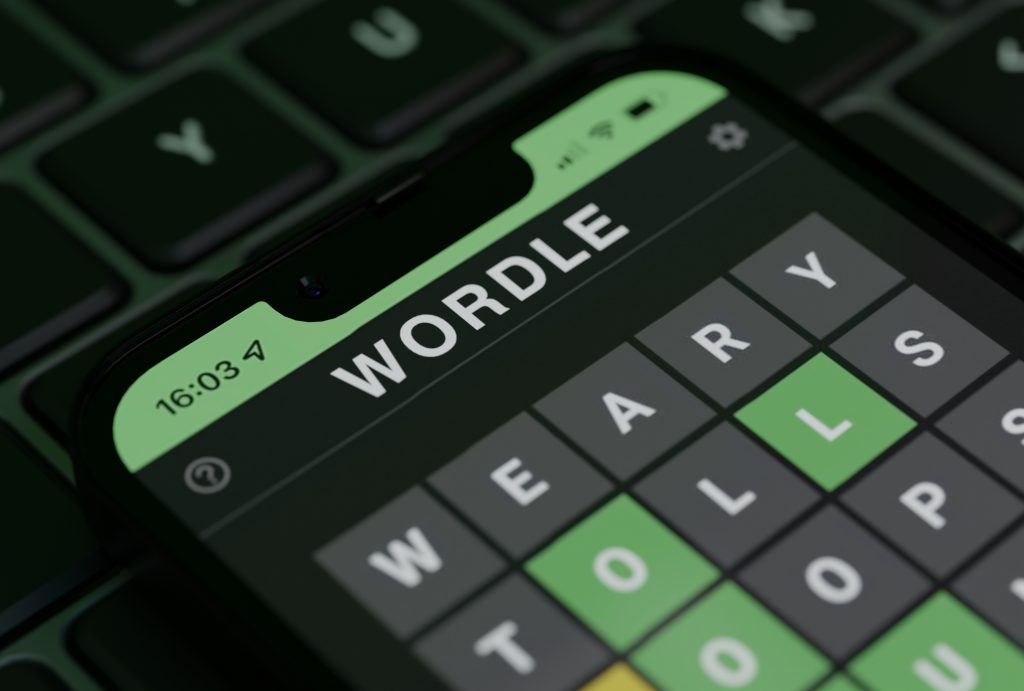
Wordle, a simple daily online word game, has taken the online world by storm and become a part of popular culture and a fixture in social media news feeds in a matter of weeks. How did this happen? It all started back in October when software engineer Josh Wardle released a game with the simple premise of guessing a five-letter word.
An audience of dozens of people in November ballooned to more than 300,000 by the beginning of the year as players took to social media to share their results, look for clues and identify new tactics to improve their guessing game. This is where the emoji scoring block was born and became so popular that Wardle added it as a direct sharing functionality.
The extent of engagement that Wordle has been generating, specifically on Twitter, has been staggering. There were 8.2m mentions on the platform in January, which is a 9,971% rise from December. Brands have been quick to spot its potential for marketing too, as tweets mentioning Wordle created 20.3bn potential impressions that month.
So, what’s behind Wordle’s success? It plays out quite differently to the digital experience that audiences expect today. There is only one game per day – that means no refreshing for new words or paid add-ons for new systems. There are just five letters and one word to guess correctly from six attempts. After that, players have to wait until the next day to try again.
This simple formula is refreshing in an age where consumers can play games endlessly and are bombarded with notifications to increase their engagement. There are no downloads, logins, profiles or data tracking. Wordle doesn’t even have any ads in the background, which is something the creator says is a “deliberate” decision and will continue.
While the lack of advertising may be disappointing for brands, there are still plenty of ways to be creative with the game and embrace what is now being called Wordle marketing. Whether this will be a long-term area of interest remains to be seen, and will depend on the enduring popularity of the game. But it certainly is something brands should consider in 2022, owing to its huge success.
How to incorporate Wordle into marketing
One of the major aspects of an effective social media strategy is getting into the right conversations, especially when certain topics are trending. Wordle is perfect for this because everyone is playing and talking about it, and social media users are actively seeking out Wordle-based posts and sharing them.
Twitter has been the primary platform for brand-based content linked to Wordle. Creators are looking at new ways to leverage the popularity of the game and this has often manifested in bespoke images combined with short snippets of text that are either funny, witty or clever.
Social scientist Juliet Landau-Pope notes that while there are only slight variations on the images many brands use, this actually works in their favour as the grid is “instantly recognizable”, which creates immediate interest and a connection. The fact that the game is so simple also means it appeals to a wide audience.
Psychologist Lee Chambers adds: “Constantly seeing the squares in our Twitter feed indicates that there is something to be solved, and others are on the case. It pulls us into investigating it ourselves.”
Wordle marketing is accessible for even the smallest enterprises for this reason, as SEO content creation does not require high-cost production or long, in-depth coverage to get right. Just a twist on a familiar theme can be enough to make it memorable. And it can be a nice change of pace from other, more business-focused messaging on social media.
Use the grid
If you want to use Wordle in your marketing straight away, which is probably best considering its visibility in popular culture right now, then you could start by incorporating the colourful grid into brand-based images. Lego recently used LEGO bricks as a Wordle grid with a caption that said “Can’t stop imagining #wordle titles as LEGO bricks”.
Hotel chain Hilton also opted for a play on the imagery of Wordle by posting an image of a hotel that looked very similar to the grid, this time with a caption stating, “When you see it #wordle” and an emoji. If you can tie your brand or your products to Wordle in this way, you could create a viral image that will boost your visibility.
Use a “word cloud”
Marketers are also using the grid to create “word clouds” that feature brand-related terms and words. This works well if you have recently conducted keyword research, though you are obviously limited to five-letter words. You will also need to use the colour-coded letter format for each try and to indicate which letters are in the correct or wrong place as you move down the grid.
Buffalo Wild Wings recently generated 4,900 likes just by urging its followers to “order wings today” and including a short “Wordle says…” caption. This example is not particularly clever, but it gets straight to the point, which can work too, depending on what message you want to communicate. All you need to create a word cloud is a simple graphic design tool. You can then publish a fun post quite quickly with a caption and hashtags to make it stand out.
Wordle has become synonymous with creative, buzzy social media marketing this year, and brands that find new and clever ways to riff on its iconic imagery and word blocks can be rewarded with an abundance of likes, shares and follows. This can then have a positive knock-on effect on other content you publish across platforms and get more people clicking through to your web pages. Positive social media signals are also great for visibility in search engines.




